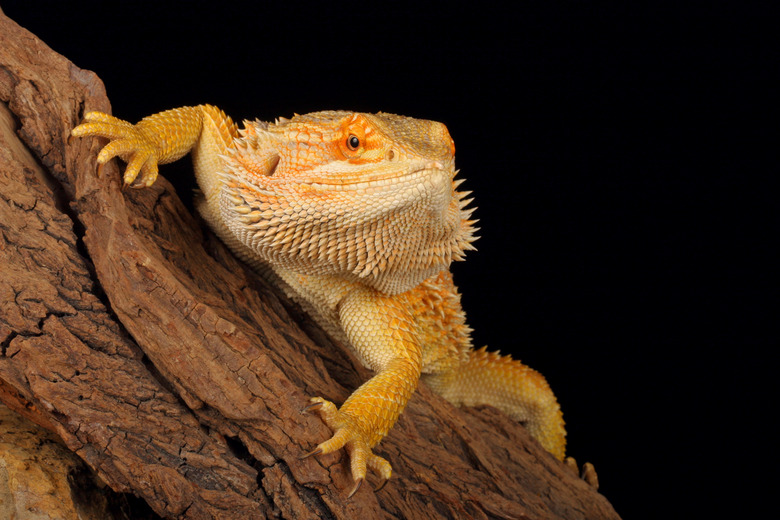Sleeping Time Habits For Bearded Dragons
Bearded dragons have many of the same sleep habits that humans and other mammals do. These reptiles sleep in the dark at night lying down, for instance. Bearded dragons also have sleep habits that differ from ours as well. They need more sleep than we do, and it is not uncommon to see them sleeping in odd positions.
Bearded dragon sleep schedule
Bearded dragon sleep schedule
The bearded dragon sleep schedule is similar to that of mammals. Bearded dragons are diurnal; they sleep at night and are awake during the day. However, bearded dragons need more sleep than many humans do.
Both baby and adult bearded dragons need eight to 12 hours of sleep each night. They require this much sleep to grow and maintain good health. Keeping your bearded dragon on a regular sleep schedule and turning his heat lamp off at the same time every night and on at the same time every morning is ideal.
Bearded dragons need darkness to sleep
Bearded dragons need darkness to sleep
Like many mammals, bearded dragons need darkness to sleep. A bearded dragon needs 10 hours of exposure to UVB light during the day. They need darkness to sleep, though, so turn off the heat lamp for your bearded dragon at the same time each night. Keeping a light on at night will interfere with your bearded dragon's sleep.
Bearded dragon sleeping positions
Bearded dragon sleeping positions
Bearded dragons sleep with their eyes closed. Oftentimes, bearded dragons sleep on their stomach. However, they also sleep in several other positions. In the wild, bearded dragons will sometimes sleep standing up in a tree. Don't be surprised if you see your bearded dragon sleeping while standing up against her vivarium wall.
Your bearded dragon may bury herself in sand before she goes to sleep. Sand helps regulate the reptile's body temperature while she sleeps.
Interestingly, bearded dragons turn a lighter shade of color when they sleep. Scientists believe this color change occurs in accordance with their circadian rhythms. You may notice that your bearded dragon turns a darker shade of color upon awakening.
Bearded dragons can sleep for long periods of time
Bearded dragons can sleep for long periods of time
Your bearded dragon may sleep for days, weeks, or months at a time. In the wild, a bearded dragon goes into brumation (a deep sleep) in the late fall and winter months to help survive the cold temperatures. Your bearded dragon likely won't sleep for months at a time, but he may have periods of time where he sleeps more, eats less, and becomes less active. A brumating bearded dragon may also eliminate less waste, spend more time in his substrate, and spend more time in the cooler parts of his tank.
Bearded dragons in captivity may or may not brumate. Most bearded dragons brumate for the first time when they are 10 to 24 months of age. Your bearded dragon may brumate every year, every other year, or not at all. It's hard to predict what an individual bearded dragon will do.
Bearded dragon sleep cycle
Bearded dragon sleep cycle
Studies show that bearded dragons experience both slow-wave and REM sleep like mammals and birds do. A mammal's sleep cycle lasts approximately 60 to 90 minutes. During this time, slow-wave sleep is interrupted for short periods of time by REM sleep.
A sleeping bearded dragon's cycle is much shorter, lasting only 80 seconds. Forty seconds of slow-wave sleep followed by 40 seconds of REM sleep comprise the bearded dragon's sleep cycle. Scientists aren't sure whether or not bearded dragons dream. Humans dream during REM sleep.
References
- Bearded Dragons World: How Do Bearded Dragons Sleep & 5 Surprising Sleeping Habits
- VivoPets: Bearded Dragon Sleeping Habits – How Much Do They Sleep?
- Total Bearded Dragon: Bearded Dragon Color: 16 Things Owners Need to Know!
- Everything Reptiles: Bearded Dragon Brumation: What to Do, Signs & Waking Up
